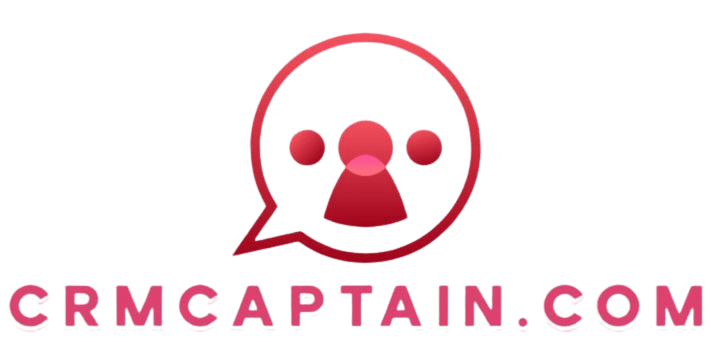Creating a CRM Implementation Roadmap
In today s fiercely competitive landscape, understanding your customers is essential. This makes Customer Relationship Management (CRM) systems an indispensable asset for your business.
But what is a CRM, and why is it crucial for your organization?
This article will guide you through the key elements of a successful CRM implementation roadmap, from identifying your goals to selecting the right software.
You ll discover the critical steps for a seamless rollout, ensuring your team is ready to fully leverage the benefits of your new system.
Dive in to uncover how to transform customer interactions and propel your business growth!
Contents
- Key Takeaways:
- Key Components of a CRM Implementation Roadmap
- Steps to Follow for Successful CRM Implementation
- Frequently Asked Questions
- What is a CRM implementation roadmap?
- Why is it important to create a CRM implementation roadmap?
- What are the key elements of a CRM implementation roadmap?
- How long does it typically take to create a CRM implementation roadmap?
- What are some common challenges when creating a CRM implementation roadmap?
- Can a CRM implementation roadmap be adjusted during the implementation process?
Key Takeaways:

Define your goals clearly to align your team and ensure success!
Assess current processes to identify areas for improvement and determine the best CRM software fit.
Plan thoroughly before launching the CRM, and regularly test and maintain it for optimal results.
What is a CRM and Why is it Important?
CRM helps you manage your relationships with customers, both current and potential. By using data to understand your customers’ history with your company, you can improve business relationships, streamline processes, and enhance productivity.
Implementing CRM systems like Pipedrive or WayPath allows you to focus on customer retention while driving sales growth. Understanding the customer journey enables you to optimize your marketing strategies and refine your communication and support efforts.
The capabilities of CRM include automation tools that simplify routine tasks, integration features that unify data from diverse sources, and advanced analytics that deliver valuable insights into customer behavior.
For example, Salesforce automates follow-ups and tracks customer interactions, while HubSpot provides comprehensive analytics to tailor your campaigns.
By aligning CRM systems with your specific objectives, you can enhance customer satisfaction and streamline operations, resulting in increased efficiency and profitability.
Key Components of a CRM Implementation Roadmap
Creating a successful CRM implementation plan requires navigating a series of strategic steps designed to optimize your customer relationship management processes.
Start with clearly identified goals and objectives that align with your business needs.
Next, assess your current processes to understand where improvements can be made.
Select the right CRM software tailored to those needs. Define roles and responsibilities to ensure clarity and accountability.
Establish a budget to set parameters for your implementation.
Finally, prioritize a user-friendly and scalable implementation phase to foster collaboration among all stakeholders. This approach sets you on the path to a successful CRM success plan!
Identifying Goals and Objectives
Identifying clear goals and objectives is crucial for the success of your CRM implementation. This focus allows your organization to enhance customer interactions and effectively achieve performance targets.
Using the SMART criteria, you can formulate goals that aim for specific outcomes and establish a framework for measurement and accountability.
For example, set a goal to improve customer retention rates by 15% within the next fiscal year. This objective is specific, measurable, and time-bound, aligning with your broader business strategies to foster loyalty.
Setting an objective to increase sales cycle efficiency by 20% within six months ensures your organization remains competitive, reinforcing your commitment to customer satisfaction.
By aligning your CRM with your goals, you can boost customer satisfaction and streamline operations don t wait to get started!
Ready to dive deeper into CRM strategies? Let s explore further together!
Assessing Current Processes and Systems
Assessing your current processes and systems is a crucial step in your Customer Relationship Management (CRM) implementation roadmap. This evaluation helps you identify issues and areas for improvement in your existing workflows, which can be better managed by setting realistic CRM implementation timelines.
This foundational assessment clarifies how data is managed and how customer interactions occur. By using employee surveys and consulting data analysts, you can gather valuable feedback on your CRM systems, ensuring that the insights reflect the real experiences of those who use them daily.
This collaborative approach helps you pinpoint problems and fosters a culture of continuous improvement. Ultimately, this leads to better operational effectiveness and stronger customer relationships.
Defining Roles and Responsibilities

Defining clear roles and responsibilities among your team members is essential for successful CRM implementation. This makes sure everyone knows their vital role in the project.
When roles like project manager, data analyst, and test engineer are clearly assigned, individuals can focus on their specific tasks without overlap. This leads to more efficient collaboration.
Involving user group representatives during implementation is vital. Their feedback provides critical insights into user needs and preferences, allowing you to tailor the system effectively. This engagement gathers valuable input and encourages user adoption as representatives feel a sense of ownership in the process.
Choosing the Right CRM Software
Choosing the right CRM software is a crucial decision that can dramatically influence your organization s customer relationship management efforts. It sets the stage for how effectively you handle customer data and execute sales strategies.
As you embark on this selection journey, consider various factors to ensure the software aligns with your business needs.
- Customization options are key, as every organization has unique processes that may require tailored solutions.
- Scalability is vital; you ll want a solution that can grow alongside your business, accommodating increasing customer data and user demands.
Don t overlook integration capabilities with your existing systems. Seamless data flow among different platforms can significantly enhance your operational efficiency. Additionally, user-friendliness is essential; an intuitive interface can facilitate quicker adoption across teams.
In this landscape, popular CRM solutions like Pipedrive stand out with impressive sales pipeline visualization, while SiteForce is celebrated for its adaptability and strong integration functionalities. These are contenders worth considering.
Take the time to explore your options and choose the solution that best meets your needs!
Creating a Timeline and Budget
Creating a well-structured timeline and budget is vital for successful CRM implementation. For detailed insights, refer to our guide on tracking CRM implementation progress. This ensures that your resources are allocated efficiently and aligned with your business needs.
Think of a carefully planned timeline as your roadmap, guiding you through each critical phase from initial training sessions to complex data migration and gathering user feedback for ongoing improvement.
By outlining these stages, you can significantly reduce the likelihood of delays, allowing your team to prepare for what lies ahead.
Don t forget about the budget. Consider not only software costs but also expenses for training and potential consulting fees.
This thorough financial planning ensures that all necessary elements are accounted for, leading to a smoother transition and greater user satisfaction.
Steps to Follow for Successful CRM Implementation
Adopting a structured approach with clear steps is vital for successful CRM implementation. This ensures that your teams follow best practices and fully leverage the capabilities of their customer relationship management solutions.
Start your CRM implementation journey today by following these steps!
Step 1: Planning and Preparation
The first step in your CRM implementation journey is planning and preparation. This phase lays a solid foundation for successful integration, including knowing how to build a CRM implementation team.
Define CRM strategies that align with your organizational goals. Engage stakeholders and team members, as their insights are invaluable.
Clear communication fosters collaboration. It ensures everyone shares a unified vision of the CRM objectives.
Encouraging open dialogue helps identify potential challenges early. This paves the way for effective solutions.
This alignment enhances buy-in from all participants. You can also tap into diverse expertise, leading to innovative strategies that drive success.
Step 2: Data Migration and Integration

Data migration and integration are key in your CRM journey. This involves transferring existing customer data into the new CRM system.
Ensure your data aligns with cloud SaaS applications. Prioritize data cleansing and validation for successful migration.
By reviewing your records, you can eliminate duplicates and inaccuracies. This enhances the quality and trustworthiness of your new system.
Integrating other tools in use within your organization is also essential. This integration allows consistent access to customer data across departments.
Ultimately, it leads to improved customer engagement and better decision-making.
Step 3: Training and Adoption
Training and user adoption are crucial for CRM implementation. They ensure you and your team can navigate the new software effectively.
Create an environment where users feel confident exploring the system. Prioritize comprehensive training resources.
- Interactive workshops.
- Detailed user manuals for initial guidance and ongoing reference.
Continuous support is vital. Provide access to assistance to encourage user adoption and engagement.
Implement feedback mechanisms to gain real-time insights. This helps identify areas for improvement and ensures the CRM evolves to meet your team s needs.
Step 4: Testing and Troubleshooting
Testing and troubleshooting are essential in your CRM journey. They help you pinpoint and resolve issues before the official launch.
This step guarantees the system’s functionalities and integrations operate smoothly. It also validates vital workflows for daily operations.
Focus on data integrity to protect information and enhance accuracy. This reduces errors that can disrupt productivity.
Prioritize user experience to ensure the system feels intuitive. Gathering feedback from users can lead to necessary adjustments.
This contributes to a robust CRM solution that aligns with your organization s goals.
Step 5: Launch and Ongoing Maintenance
The final step launch and ongoing maintenance is crucial for your CRM implementation. This phase ensures that your system stays effective and adapts to your business needs.
To truly thrive after the launch, you must closely monitor performance metrics and key performance indicators (KPIs). This ongoing evaluation helps you pinpoint areas for improvement, offering valuable insights into how well your CRM system meets its objectives.
By fostering a proactive approach to managing the system, you can ensure ongoing support. Regular updates are essential for introducing new features and enhancing existing ones. Collecting user feedback guarantees that the system evolves in line with actual user experiences.
System customization enhances user satisfaction and operational efficiency as new needs arise.
Frequently Asked Questions
What is a CRM implementation roadmap?

A CRM implementation roadmap is a strategic plan outlining the steps and timeline for implementing a CRM system within an organization.
Why is it important to create a CRM implementation roadmap?
Creating a roadmap is essential for CRM success. It ensures timely, organized steps leading to effective CRM implementation.
What are the key elements of a CRM implementation roadmap?
The key elements include defining goals and objectives, assessing the current state of the organization, selecting a CRM system, planning the implementation process, testing and training, and ongoing support and maintenance.
How long does it typically take to create a CRM implementation roadmap?
The time to create a roadmap varies based on the organization s size and complexity, usually taking between 2-4 weeks to develop a comprehensive plan.
What are some common challenges when creating a CRM implementation roadmap?
Common challenges include defining clear goals, accurately assessing the organization’s current state, and selecting a CRM system that meets both needs and budget.
Can a CRM implementation roadmap be adjusted during the implementation process?
Yes, a roadmap can be adjusted when unforeseen challenges arise. Regularly reviewing and updating the roadmap is crucial to ensure successful implementation.






